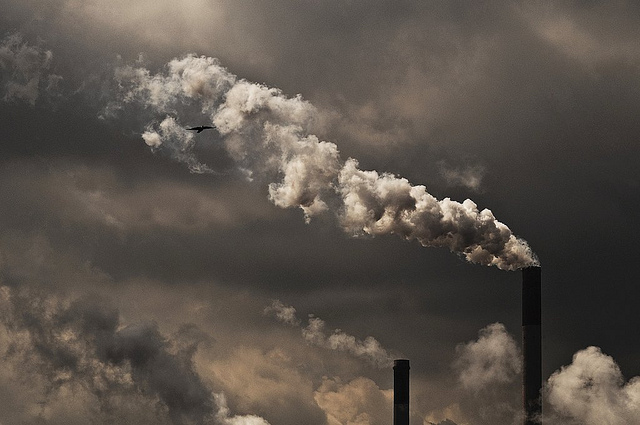High-impact climate risks, low-probability? Think again

In a recent presentation, I recommended, quite unoriginally, that governments should have a greater focus on higher-impact, lower-probability climate risks. My reasoning was that current climate model projections have blind spots, meaning we are betting on best case scenarios.
Irresponsible at best and ‘fatally foolish at worst’, this approach is inconsistent with other security issues—I don’t know many analysts assessing nuclear escalation or a potential Taiwan Strait crisis from the best-case angle.
Globally, January 2025 was the warmest January on record. This included severe heatwaves across Australia, with maximum temperatures as high as 17 degrees C above average.
This warming was unprecedented and, importantly, unexpected. This is an ever-increasing climate-related trend—reality continues to outstrip scientific expectation. Given this, my use of the term ‘lower-probability’ was itself, in hindsight, an example of this best-case mentality: designating high impact climate events as low probability is likely, at best, a dangerous underestimate.
Beyond blind spots in climate model projections, theories and scientists (their calculations and biases) are not infallible. Therefore, the accuracy of probability estimates depends on the accuracy of the underlying logic. Regarding probability:
… if climate modellers wish to determine the implications our greenhouse gas emissions will have … their model/theory will not be adequate [at predicting relevant system features at useful levels of precision and frequency] unless it tells them the changes in the local temperature and precipitation.
Yet, current models seem unable to adequately predict global, let alone local, climate changes. In June 2024, for the first time, global mean surface temperatures reached the Paris Agreement’s aspirational threshold of 1.5 degrees C of warming for 12 consecutive months—again, much earlier than expected.
This is particularly concerning given that most climate impact research of the past decade has been based on temperature rises of 2 degrees C and below, this despite greenhouse gas trajectories setting the world on track to warm by more than 3 degrees C by 2100. Various studies even suggest that we cannot discount increases of up to 6 degrees C.
Various factors drive the mismatch between warming estimates and research coverage. Firstly, as 2 degrees C is the benchmark of international targets, research likely reflects policy demand. Secondly, due to well-funded misinformation campaigns, scientists have been labelled alarmist and want to avoid such dismissal. Thirdly, the consensus process of the International Panel on Climate Change is inherently conservative, which also compounds the previous factors.
How can we deem potential climate impacts low probability if we haven’t properly researched them and their potential dynamics under the higher temperatures we are headed towards?
Further, we today are locking in the events that will undoubtedly happen tomorrow. This is often overlooked and underestimated by security practitioners—unlike military conflict, for example, people are not fully in control. Feedback mechanisms exist within Earth’s systems that, once initiated by rising temperatures, will cause abrupt, self-perpetuating and effectively irreversible changes.
Thermal inertia reinforces this lack of control. The ocean stores more than 90 percent of Earth’s excess heat. Even if man-made greenhouse gases were to cease tomorrow, the world would continue warming for at least another several decades as this stored heat is released.
Due to the factors outlined above, there is uncertainty regarding the reliability of probability estimates for specific events, when they might occur, and the chains of cause and effect that may trigger them.
However, uncertainty does not equal low probability. A lack of certainty around calculation inputs merely lowers confidence in the accuracy of probability estimates. Consequently, the actual likelihood of a particular event occurring may be much higher than predicted.
Moreover, given existing blind spots and biases, it is highly likely that probabilities around singular high-impact climate risks are underestimated, particularly within the security community.
If we analyse climate threats on a cumulative risk basis, the margin for error grows, increasing the collective probability estimates of climate events occurring. Hence, we can have confidence, given our current trajectory, that the collective probability of at least some high impact climate events materialising is high. We shouldn’t use terminology suggesting otherwise.
We must stop analysing events in isolation and begin to better comprehend event compounds, cascades, and concurrency—and fast. This is especially true for probability, as it informs much of the world’s risk and security analysis and management.
All trajectories are subject to change and human decision. But until this change happens, we are heading into uncharted territory.
We can, however, learn from another high-stakes area in which decisions rely on scientific evidence: public health. Patients are not treated by scientists undertaking clinical research, but rather by general practitioners. Justine Lacey and Mark Howden argue that a similar separation between scientist and practitioner would support better climate-science advice to policymakers.
This separation can facilitate relevant and targeted advice encompassing a range of views, largely independent of specific researchers. It could improve the interpretation and translation of advice, enhancing decision-makers’ understanding. This could reduce conflicts of interest and avoid narrowly informed and disciplinary-siloed advice. It would also create shared responsibility, alleviating pressure on the climate science community.
Although intermediaries cannot remove uncertainty, they could help manage it—to the benefit of probability estimates, decision-making and the public.


